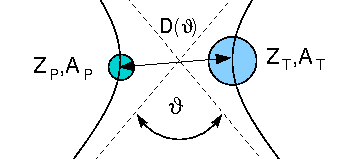Nuclear physics stands as one of the most intricate and intellectually demanding fields in the realm of science. It delves into the constituents and interactions of atomic nuclei, requiring an extensive comprehension of both advanced theoretical frameworks and practical laboratory techniques. The arduous path to becoming a nuclear physicist involves rigorous academic commitments and the cultivation of a multifaceted skill set, all of which contribute to the difficulty of these studies.
At the outset, the foundational disciplines of physics and mathematics provide the groundwork upon which nuclear physics is built. Students typically start their academic journey with calculus, linear algebra, and classical mechanics. Mastery of these subjects is paramount; they serve as the essential tools that physicists use to model and predict the behavior of nuclear systems. As students progress, they must quickly assimilate complex concepts such as quantum mechanics and special relativity, which often pose significant intellectual challenges.
Quantum mechanics, in particular, demands a shift in classical thinking, as it requires an understanding of phenomena that seem counterintuitive. The probabilistic nature of quantum behavior, Heisenberg’s uncertainty principle, and wave-particle duality are foundational yet perplexing themes that students encounter early in their studies. Grappling with these concepts necessitates not only mathematical proficiency but also an ability to engage with abstract ideas in a meaningful way.
Moreover, as students advance into specialized courses in nuclear physics, they encounter sophisticated theories such as the Standard Model of particle physics. This framework describes the fundamental particles and forces that govern the interactions in the universe, directly linking the study of nuclear physics to the broader context of particle physics. The extensive spectrum of interactions involved, from electromagnetic to weak and strong nuclear forces, requires an integrated understanding of both fields, further complicating the study.
Laboratory work magnifies the challenges faced by aspiring nuclear physicists. Practical experience is indispensable as it provides students with the opportunity to apply theoretical principles in real-world scenarios. Experiments in this sector often involve handling hazardous materials and complex equipment, such as particle accelerators and detectors. This necessitates not only technical expertise but also an acute awareness of safety protocols and ethical considerations when conducting experiments involving radioactive materials.
Another significant aspect of nuclear physics education is the expectation of proficiency in computational methods. Advanced simulations and modeling are critical components of modern research. The ability to use computational tools to solve complex equations and visualize nuclear interactions is a skill that students must develop. This facet of study requires a balance between theoretical knowledge and practical programming skills, adding another layer of complexity to the educational experience.
The challenges do not cease with undergraduate studies; the pursuit of a graduate degree elevates the difficulty to even greater heights. A master’s or doctoral program often entails extensive research, contributing to published work that demands originality and depth. Graduate students are expected to navigate the existing literature, identify gaps in knowledge, and formulate novel hypotheses, which is a daunting task that requires independent thought and creativity. The pressure to produce high-quality research can be overwhelming.
Additionally, the collaborative nature of nuclear physics research presents its own set of challenges. Graduate students frequently work alongside seasoned physicists, sharing findings in a collective environment. While collaboration fosters innovation and learning, it can also lead to a competitive atmosphere. Junior researchers are often tasked with contributing to interdisciplinary projects, further broadening their scope of study but also complicating their focus as they must grasp various fields ranging from condensed matter physics to astrophysics.
Navigating the academic landscape is also fraught with uncertainty—students may face difficulties securing funding for research, which can impede progress and increase stress levels. The quest for grants and fellowships can be arduous and competitive, requiring students to prepare meticulous proposals and present compelling cases for their research initiatives.
In conclusion, the studies of nuclear physicists are characterized by a high degree of difficulty stemming from a complex interplay of advanced theoretical concepts, rigorous laboratory practices, and demanding research requirements. Students must cultivate an extensive knowledge base while simultaneously developing critical computational and experimental skills. Furthermore, the challenges associated with collaboration and funding can add layers of complexity to their academic journey.
While the path to becoming a nuclear physicist is undeniably challenging, it also presents remarkable opportunities for intellectual growth and discovery. For those who are passionate about unraveling the mysteries of the atomic nucleus and contributing to advancements in science and technology, the effort is ultimately rewarding. As students navigate through this demanding educational process, they are not merely acquiring knowledge; they are also learning to think critically and innovatively in one of the most fascinating realms of modern science.












